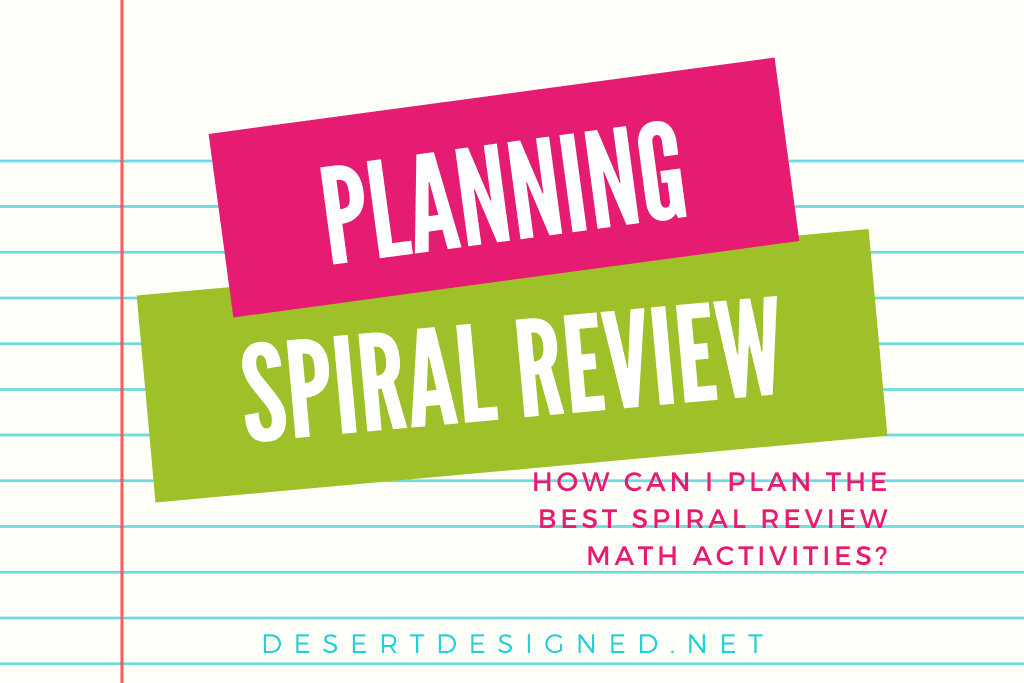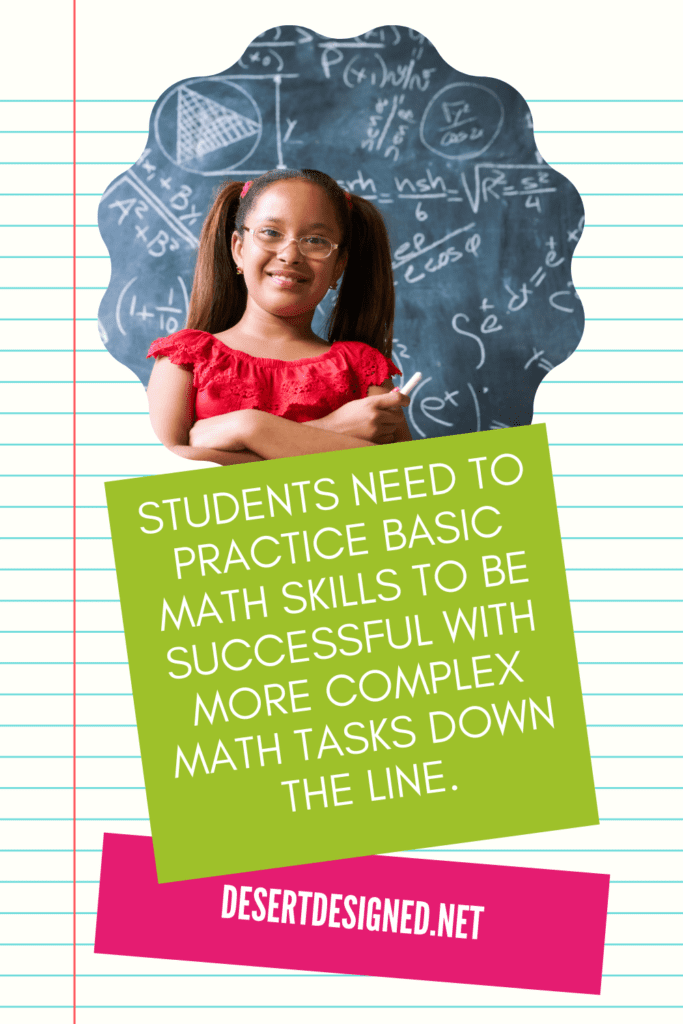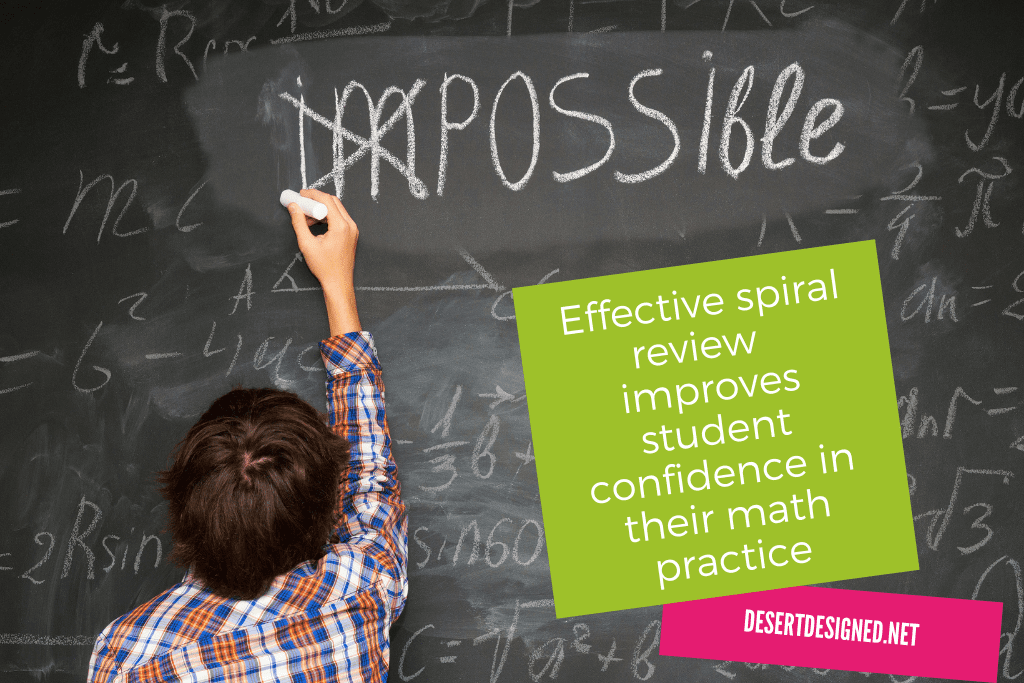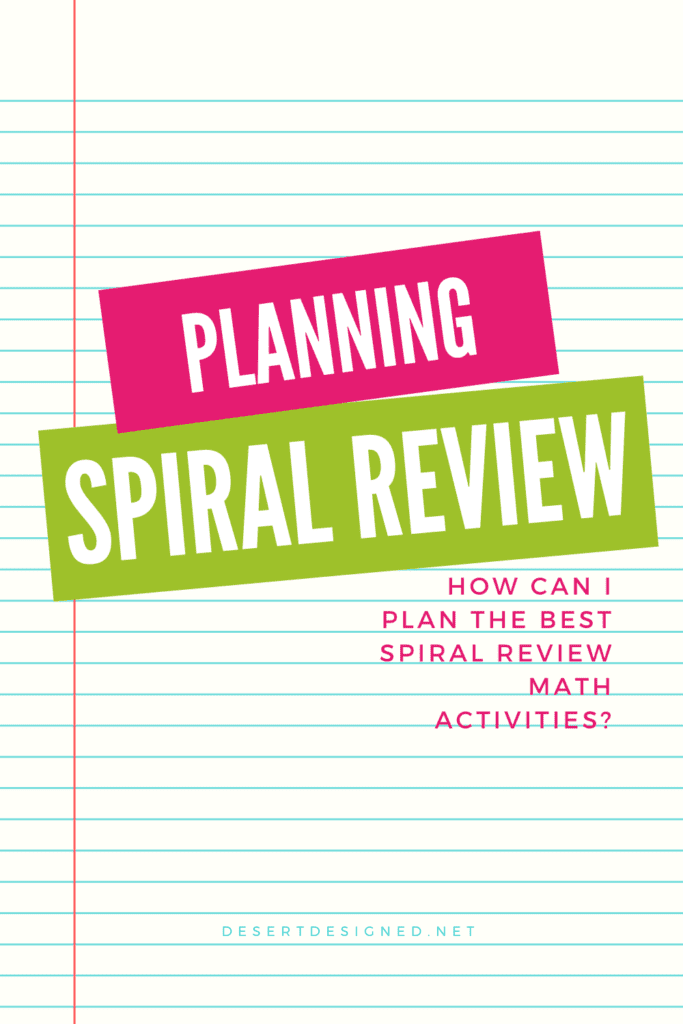
When I first started teaching, I had the fantastic opportunity to roll up from fourth grade to fifth grade and got to keep about half of my students. There are so many reasons this was totally amazing, but it also taught me many valuable lessons. One of those lessons was about the importance of spiral review math activities. As I worked through the math curriculum, I expected my students to have retained specific skills. I can’t tell you how many times I’d start teaching something without reviewing prerequisite skills and have students tell me, “we’ve never done this before.”
It cracked me up every time. I would tell my students, “I know for a fact that you learned this! I am the one who taught it to you!” However, these were smart kids. As the year went on and we faced this multiple times, I began to realize that kids do NOT just remember every single thing we ever teach them.
If you think about it, this makes sense. How many times do you need to hear brand new information before it sticks in your brain? According to Blaine Helwig, general education students require between 8 to 18 repetitions to learn and achieve mastery.
Obviously, we need to use spiral review, especially in mathematics.
Advantages of Spiral Review in Math
Using a systematic spiral review in your math instruction, you will have the opportunity to spiral back to skills that you want your students to continue to practice and remember. It also provides a chance to front-load the prerequisite skills for more complex concepts and strategies.

For example, we assume that students in fifth grade have fully mastered subtraction with regrouping, but many kids still get stuck when regrouping across zeroes or make minor computation errors. Occasionally, I still run into a student who will “subtract up” and not use any regrouping at all!
Types of Math Spiral Review
There are many options for spiral review in mathematics. If you use a math program, there may be a spiral review built into the curriculum. Some schools have purchased specific spiral review programs such as Mountain Math or Everyday Mathematics. There are spiral review products available for purchase on Teachers Pay Teachers, such as my Daily Math Warm-Up. Finally, some teachers like to write and tailor their own spiral reviews for their classes.
Analyzing the Spiral Review You Have Chosen
Just because you have a spiral review system or program you have decided upon using doesn’t mean that it should be used mindlessly. Sure, just going from one day to the next is simple and easy, but take the time to read each problem before you present it to your students and assess its value to your math scope and sequence as well as your students’ abilities.
Here are some questions to ask yourself when deciding if you should choose a spiral review program or if the specific questions are suitable for your students at the given time:
- Should my students already know how to do this?
- The answer to this question should be yes. The one exception is if you are trying to introduce students to a skill needed for an upcoming lesson.
- Can all of my students already complete this type of question with complete mastery?
- The answer to this question should be NO. If you are doing a spiral review in a gen ed 5th grade class, they do not need to practice skills like adding single-digit numbers.
- Have some of my students been struggling slightly with this skill lately?
- If you answer yes, that’s ok. Kids need practice. However, make sure you take a few minutes to review HOW to do the math, not just telling the students the correct answer. Alternatively, you can have students partner up if dong problems that fall into this category.
- Do all of my students struggle with this?
- Your answer should be no here. If you find yourself answering yes, think about why you are using this question. If my class needs to know how to do it, instead of including it in spiral review, this should become a core math lesson or mini-unit. Your students do not just need more drills if you are answering yes to this. They need further, direct, and guided instruction in the skill.
Writing Your Own Spiral Review Questions
You may find that the spiral review you have access to isn’t just right. Or perhaps you want to add a few more questions that are more tailored to what you would like your students to practice. If this is the case, here are some things to consider when writing your spiral review.
I like to keep my spiral review short. About 4-5 questions are perfect for the time I have available. Of those questions, here is how I break down the types of questions I add into my spiral review:
Math Computation

Students should have a basic set of computation skills by upper elementary, but most of them could still use practice to keep these skills fresh. Consider having them practice any of the following:
- Multi-digit addition
- Subtraction with regrouping
- Multiplication fluency
- Division Facts
Word Problems
I always try to include a word problem in my spiral review. As students become more proficient at answering word problems, I try to make the wording slightly tricky or add unnecessary information into the problem. When solving word problems, you should also have students take some time to focus on the vocabulary that is used. Need help teaching math vocabulary? We have a great post all about it here.
Place Value
What place value skills have students already learned? We do not regularly talk about the value of digits, place value positions, or expanded form. Consider putting a place value problem into your spiral review. Keeping students’ place value skills fresh will help them in many other types of problems.
Geometry
Geometry often gets squished into a few weeks of the school year and seems forgotten during the rest of the year. Students often struggle with defining geometric figures (they can usually identify a picture but struggle to communicate their definitions).
Foundational Fraction Concepts
Many students have a great deal of anxiety centered around fractions and fraction computation. The stress and anxiety these students associate with fractions can lead to shutting down when learning essential fraction skills. By having students practice basic fraction skills, preferably those taught during the previous school year, students will feel more comfortable learning new ways to manipulate and calculate fractions.

Prerequisite Skills for Upcoming Lessons
Think about the lessons you have coming up soon. What do you need the students to be able to do proficiently for those lessons to go smoothly? Teaching division soon? You want the kids to be able to subtract. Are you teaching the addition of fractions with unlike denominators? Students need to understand factors and multiples. It is so frustrating to have to go back and reteach skills in the middle of a math lesson. Using these skills in your spiral review can alleviate some of this frustration for both yourself and your students because they will have recently practiced and reviewed the skill.
Spiral Review Routine
Now that you have an idea of how to evaluate, write, or plan your spiral review for your class, it is time to think about establishing a routine for the procedure. It is crucial to remember that spiral review is not just busy work. If you use this time to give yourself a minute or check your emails, you will send a message to your students that doing a spiral review is just a filler.
To make the most of your spiral review time, be sure to circulate the room as students work on the problems. Keep the time brief since this is not the main meat of your lesson. Quickly review the answers to each question and take a brief amount of time to explain any parts that students did not understand. I give 5-7 minutes to complete the problems and about 5 minutes to review the answers.
Be careful that you don’t let your spiral review turn into a full-blown lesson. If most of your students don’t know how to do one of the problems correctly, use that information as a formative assessment and plan a future lesson to address the skill completely.
You can also consider adjusting the next day’s questions to include a similar question at a more manageable level to work the students up into a more challenging version.

Wrapping Up Spiral Review
Be sure to transition quickly from your spiral review into your lesson. Having smooth transitions is a key to maintaining student engagement and fitting all you need to into a math lesson.
Your spiral review can be a powerful time in your class or just a simple time filler. You choose how to spend this time. The value of spiral review is up to how you conduct this portion of your lesson.



